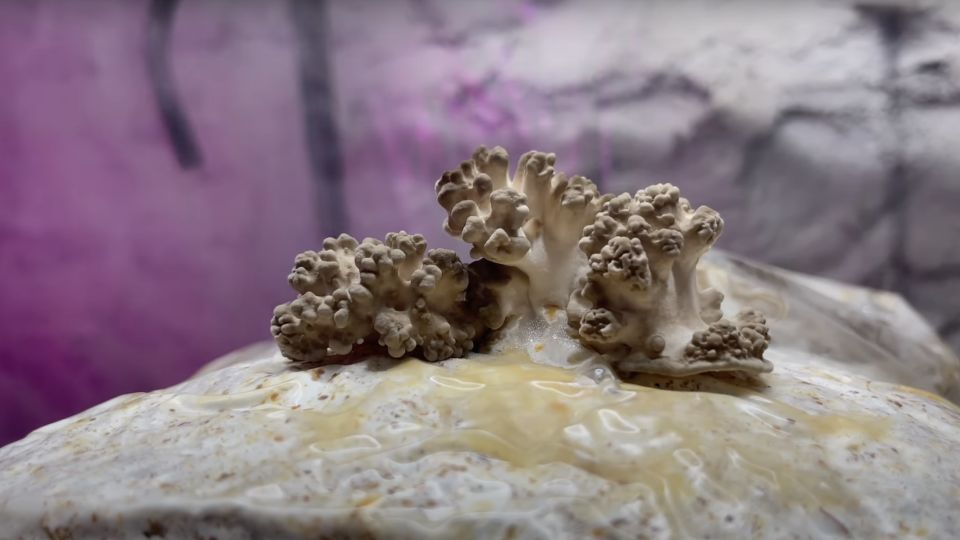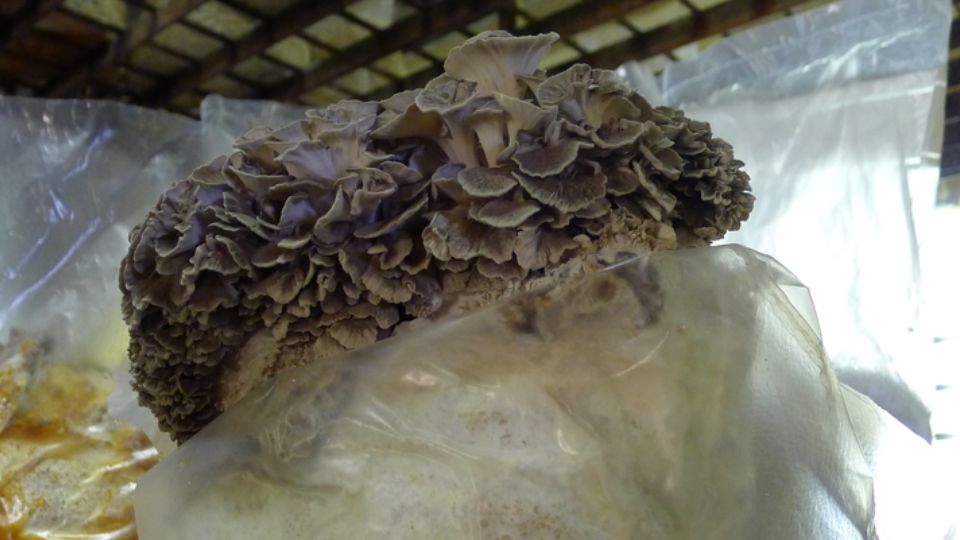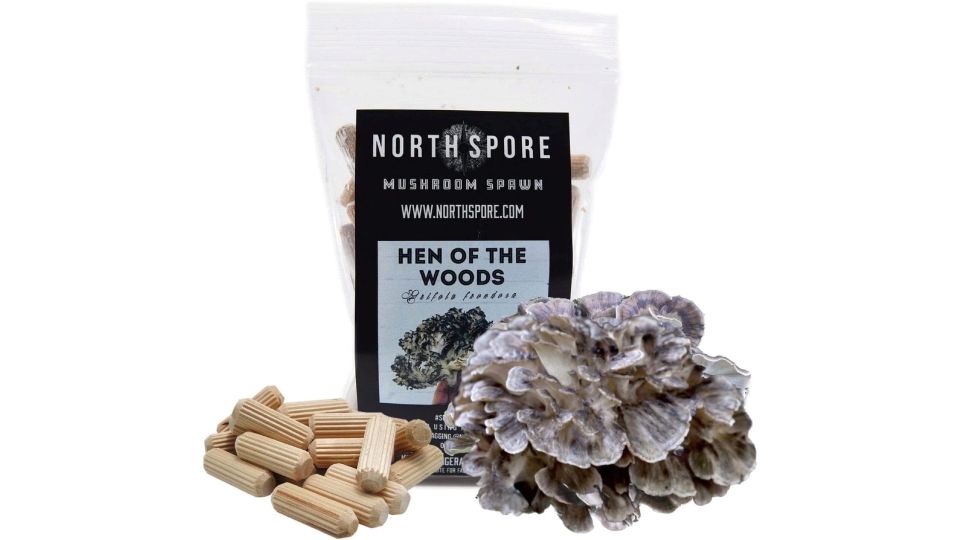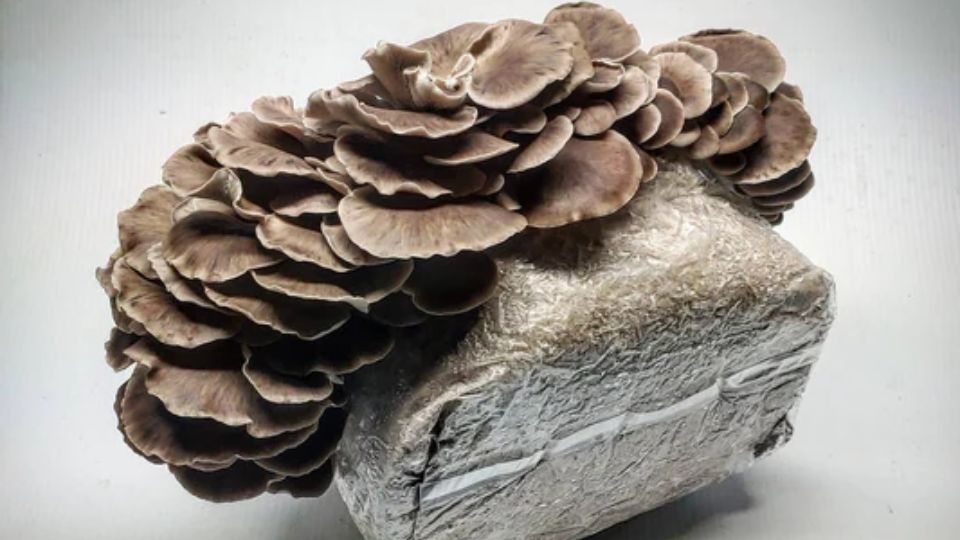Maitake Mushroom Growing Kit Instructions
If you’re interested in growing Maitake mushrooms (Hen of the wood) at home, consider the mushroom growing kit. These kits offer you everything needed to kickstart your mushroom growing journey, including mycelium-colonized mushroom spawn, culture medium, and easy-to-follow instructions.
In this guide, we’ll take you through the step-by-step process of growing Maitake mushrooms with a growing kit. We’ll discuss the factors to consider when choosing a kit, explore the pros and cons of using mushroom growing kits, and provide practical tips for ensuring your cultivation success.
In this article:
What’s Inside a Maitake Mushroom Growing Kit?
A typical Maitake Mushroom Growing Kit provides materials and instructions for home cultivation. Common components of the kit include:
- Maitake Mushroom Spawn, essentially mycelium grown on a substrate like grain or sawdust, serves as the starting point for growing.
- The growing medium, like sterilized sawdust or enriched wood chips, provides essential nutrients for Maitake mushroom growth.
- The kit includes detailed instructions for setup, medium preparation, spawn inoculation, and optimal growth conditions.
- Depending on the kit, you might receive additional accessories like a spray bottle or humidity tent to maintain ideal moisture levels.
How to Grow Maitake Mushroom Using a Growing Kit
Growing Maitake mushrooms using a kit is a straightforward process. Start by selecting a suitable location for your kit – a space with indirect light and proper ventilation is ideal. Follow the kit’s instructions for setting up the substrate and initiating growth. Maintain the appropriate temperature and humidity levels as specified in the instructions to encourage robust mushroom development.
Step-By-Step Introduction

- Prepare Your Substrate: Open the kit and follow the instructions to add water, ensuring it’s evenly moist.
- Mix in the Spawn: Open the Maitake mushroom spawn packet and mix it thoroughly with the substrate.
- Incubate: Seal the bag, find a warm, dark spot (around 65-75°F), and let it sit for the time specified in the kit instructions.
- Plant It: After incubation, take the bag to a shaded outdoor spot. Bury it with the top about an inch below the soil. Remember where you buried it.
- Keep It Hydrated: Water the kit daily using a hose for approximately three weeks.
- Harvest Time: Maitake mushrooms usually start growing in late summer or fall, roughly a year after burying the kit. These kits can produce mushrooms for over seven years, so keep an eye on them. When they’re ready, simply pull and twist the mushrooms to harvest. Enjoy!
Pros of Using Mushroom Growing Kits for Cultivation

Opting for a mushroom growing kit presents numerous benefits. Kits are designed with beginners in mind, providing a user-friendly experience that requires minimal prior knowledge. Each mushroom growing kit provides all the essential components, eliminating the need for you to search for or prepare any materials. These kits also demand minimal effort and come with clear instructions that guide you through the cultivation process. You’ll find it remarkably simple to monitor your mushrooms until they’re ready for harvesting. Additionally, these kits eliminate the need for extensive equipment and space, making them perfect for those with limited resources.
Cons of Cultivating with a Kit
Not all grow kits are the same. Some will yield more mushrooms than others. The product description usually mentions the expected harvest, but your results can vary based on how closely your growing conditions match the kit’s requirements.
Kits may have limitations in terms of the variety of mushrooms you can grow compared to traditional cultivation methods. Additionally, the yield from a kit might be smaller compared to a larger-scale setup.
Maitake Mushroom Growth Timeline
Typically, these kits can produce your first harvest within a few weeks, allowing you to enjoy the fruits of your labor in a relatively short time.
Most kits will provide you with at least two rounds of fresh mushrooms. This process, referred to as “fruiting”, happens when you expose your kit to the right combination of light, temperature, and humidity. It’s during this time that the mushroom mycelium transforms into actual mushrooms.
Growing Tips
To ensure a successful harvest, here are some valuable tips:
- For the best results, keep your mushroom kit in a shaded area, not in complete darkness.
- Keep the growing environment clean and free from contaminants.
- Monitor the temperature closely to avoid extremes. Aim for a cool temperature between 13-18 degrees Celsius (55-65 degrees Fahrenheit).
- Mist the kit with water to maintain proper humidity levels. Maintain a relative humidity level of 80-90%.
When to Harvest Your Mushrooms
Patience is key when growing Maitake mushrooms. Once the mushrooms begin to form, it’s important to wait until they reach their full size before harvesting. Harvesting too early can impact the flavor and texture of the mushrooms. When the edges of the mushroom caps begin to curl upward, it’s a good indication that they’re ready to be picked.
To find out the best time to harvest your fresh mushrooms, check the product description or the included instructions in your kit.
Types of Growing Kits
Aside from the maitake mushroom growing kit you can find on Amazon, you have a range of options such as Reishi, oysters, lion’s mane, Turkey tails, and more. Kits are available for various mushroom types, considering both their edibility and cultivation needs, allowing you to tailor your choice to precisely match your requirements.
Other Ways of Growing Maitake Mushrooms

Growing on Logs
Find healthy oak trees or branches, cut them, and treat the logs by pressure cooking, steaming, or boiling. After incubation, bury the log vertically in a shaded outdoor spot, with the top one inch below the soil surface. Expect mushrooms to fruit in late summer or fall, about a year later. Alternatively, you can conveniently purchase a log growing kit on Amazon.
Growing on Substrates
You can cultivate maitake mushrooms on substrates like sawdust, straw, or coffee grounds. Sterilize the substrate, then inoculate it with mushroom spawn. Keep the growing environment moist and at the right temperature for mushroom growth.
Growing in Your Yard
If you have a maitake mushroom growing kit, bury it in your yard and water it daily with a hose for about three weeks. Soon, you’ll see the mushrooms begin to grow, and you can harvest them when they’re ready. Enjoy your homegrown maitake mushrooms!
Foraging
Keep an eye out for maitake mushrooms while hiking in the fall. Look near oak, maple, and elm trees, typically at the base where there’s plenty of dead leaves and organic matter. They usually avoid open ground.
Health Benefits of Maitake Mushroom
Beyond its culinary appeal, Maitake mushrooms offer a plethora of health benefits. Rich in vitamins, minerals, and antioxidants, these mushrooms have been traditionally used in various cultures for their potential immune-boosting properties. Studies suggest that Maitake mushrooms may have positive effects on anti-aging and overall health, making them a valuable addition to any diet[1].
Here are some benefits of maitake mushrooms:
- Lower Cholesterol: The mushrooms can help lower your cholesterol. They contain beta-glucan, which improves artery function and reduces your risk of heart disease[2].
- Regulate Blood Sugar: They are beneficial for balancing blood sugar, especially if you have type 2 diabetes[3].
- Boost Immunity: The beta-glucan in these mushrooms is a compound that supports your immune system. D-fraction in maitake mushrooms enhances the production of lymphokines, boosting your immunity[4].
- Reduce Inflammation: They also have anti-inflammatory and antioxidant properties, helping to reduce inflammation linked to chronic diseases[5].
How to Cook Maitake Mushrooms?
To cook Maitake mushrooms, one of the simplest and most popular methods is sautéing them in butter or olive oil. Be creative in your approach! Maitake mushrooms have a unique flavor and texture that can enhance your dishes. However, eating Maitake mushrooms raw is safe. When they’re young, these mushrooms are tender throughout their leaf-like lobes and bodies, making all parts edible. As Maitake mushrooms mature, they become tougher and fibrous, with only the uppermost lobes staying soft and suitable for consumption. Maitake has a distinctive woodsy and spicy flavor.
For more delectable recipe ideas featuring Maitake mushrooms, explore our recipe blog to delight your taste buds.
You can enjoy maitake mushrooms in various dishes like pasta, noodle bowls, and burgers. However, before adding them to your diet or taking supplements, consult your doctor. They can discuss potential benefits and risks while guiding you on the best option for your health.
FAQs – Maitake Mushroom Growing Kit Instruction
Are Mushroom Growing Kits Reusable?
No, most mushroom growing kits are not reusable. They are designed for a single growth cycle, and after harvesting, the kit is typically exhausted of nutrients needed for mushroom growth. It’s best to purchase a new kit for each growing cycle for consistent results.
Is Growing Mushrooms From a Kit Difficult?
No, growing mushrooms from a kit is generally not difficult. Most kits are designed to be user-friendly and come with clear instructions. As long as you follow the provided guidelines for light, temperature, and humidity, you can enjoy a successful mushroom harvest with ease.
What Temperature is Best For Your Mushroom Kit?
The best temperature for your mushroom kit is typically in the range of 65-75°F (18-24°C). Your mushroom kit is quite adaptable when it comes to temperature. While it thrives at room temperature, it can still grow if it gets a bit colder or warmer. The key here is to ensure they have ample fresh air.
How Do I Store My Mushrooms?
To store your mushrooms in a paper bag or a breathable container in the refrigerator. This helps maintain freshness. Avoid sealing them in plastic bags, as moisture buildup can lead to spoilage. Consume them within a week or consider drying or freezing for longer preservation.
How Long Does Each Mushroom Growing Kit Last?
The number of harvests you’ll get from each grow kit typically ranges from 2 to 3, but it can vary based on the specific type of kit you select. The total amount of mushrooms a kit yields before needing replacement can differ, with some kits producing more and others less.
Final Thoughts About Mushroom Growing Kits
Mushroom growing kits, including the Maitake mushroom kit, provide an accessible gateway into the captivating world of fungi cultivation. While they may have their limitations, these kits offer a convenient and rewarding experience for both beginners and experienced growers alike. Whether you’re a culinary enthusiast looking to add fresh gourmet mushrooms to your dishes or a health-conscious individual seeking immune-boosting benefits, a mushroom growing kit can be a worthwhile investment.
References
1. Anti-Aging and Neuroprotective Properties of Grifola frondosa and Hericium erinaceus Extracts. Retrieved from https://www.researchgate.net/publication/364434727_Anti-Aging_and_Neuroprotective_Properties_of_Grifola_frondosa_and_Hericium_erinaceus_Extracts
2. Effect of Dietary Maitake (Grifola frondosa) Mushrooms on Plasma Cholesterol and Hepatic Gene Expression in Cholesterol-Fed Mice. Retrieved from https://www.jstage.jst.go.jp/article/jos/62/12/62_1049/_article/-char/en
3. Health benefits of Grifola frondosa polysaccharide on intestinal microbiota in type 2 diabetic mice. Retrieved from https://www.sciencedirect.com/science/article/pii/S2213453021000744
4. Structural Elucidation and Immune-Enhancing Effects of Novel Polysaccharide from Grifola frondosa. Retrieved from https://www.ncbi.nlm.nih.gov/pmc/articles/PMC6500627/
5. Structural properties and anti-inflammatory activity of purified polysaccharides from Hen-of-the-woods mushrooms (Grifola frondosa). Retrieved from https://www.researchgate.net/publication/368346795_Structural_properties_and_anti-inflammatory_activity_of_purified_polysaccharides_from_Hen-of-the-woods_mushrooms_Grifola_frondosa

